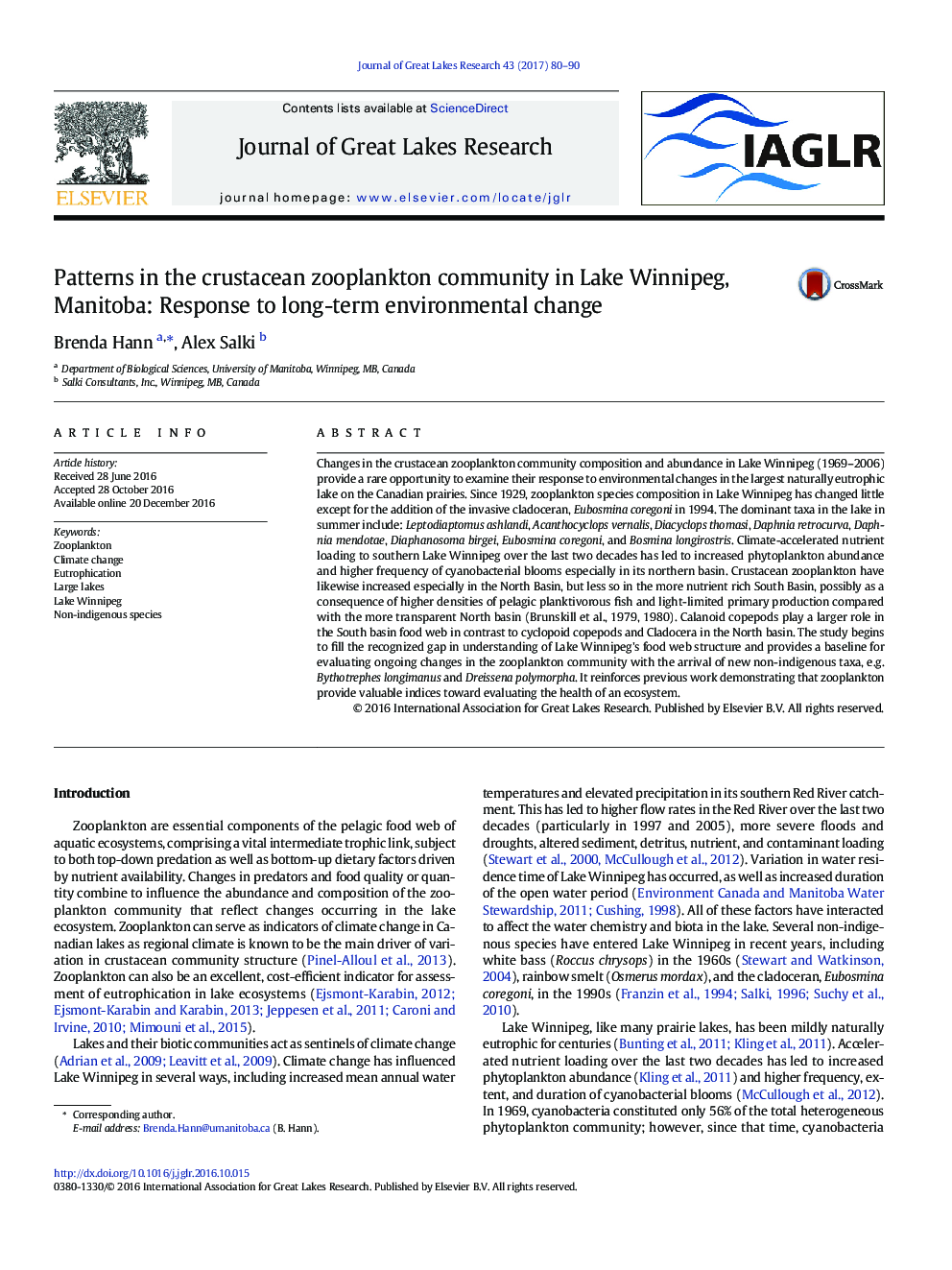| کد مقاله | کد نشریه | سال انتشار | مقاله انگلیسی | نسخه تمام متن |
|---|---|---|---|---|
| 5744772 | 1412368 | 2017 | 11 صفحه PDF | دانلود رایگان |
Changes in the crustacean zooplankton community composition and abundance in Lake Winnipeg (1969-2006) provide a rare opportunity to examine their response to environmental changes in the largest naturally eutrophic lake on the Canadian prairies. Since 1929, zooplankton species composition in Lake Winnipeg has changed little except for the addition of the invasive cladoceran, Eubosmina coregoni in 1994. The dominant taxa in the lake in summer include: Leptodiaptomus ashlandi, Acanthocyclops vernalis, Diacyclops thomasi, Daphnia retrocurva, Daphnia mendotae, Diaphanosoma birgei, Eubosmina coregoni, and Bosmina longirostris. Climate-accelerated nutrient loading to southern Lake Winnipeg over the last two decades has led to increased phytoplankton abundance and higher frequency of cyanobacterial blooms especially in its northern basin. Crustacean zooplankton have likewise increased especially in the North Basin, but less so in the more nutrient rich South Basin, possibly as a consequence of higher densities of pelagic planktivorous fish and light-limited primary production compared with the more transparent North basin (Brunskill et al., 1979, 1980). Calanoid copepods play a larger role in the South basin food web in contrast to cyclopoid copepods and Cladocera in the North basin. The study begins to fill the recognized gap in understanding of Lake Winnipeg's food web structure and provides a baseline for evaluating ongoing changes in the zooplankton community with the arrival of new non-indigenous taxa, e.g. Bythotrephes longimanus and Dreissena polymorpha. It reinforces previous work demonstrating that zooplankton provide valuable indices toward evaluating the health of an ecosystem.
Journal: Journal of Great Lakes Research - Volume 43, Issue 1, February 2017, Pages 80-90
